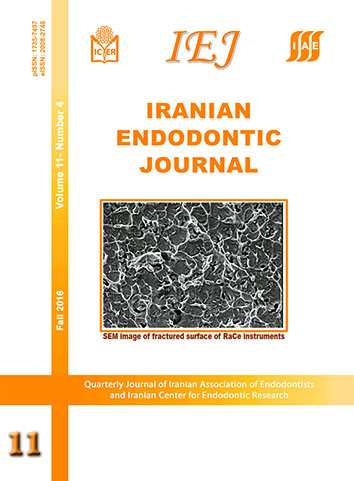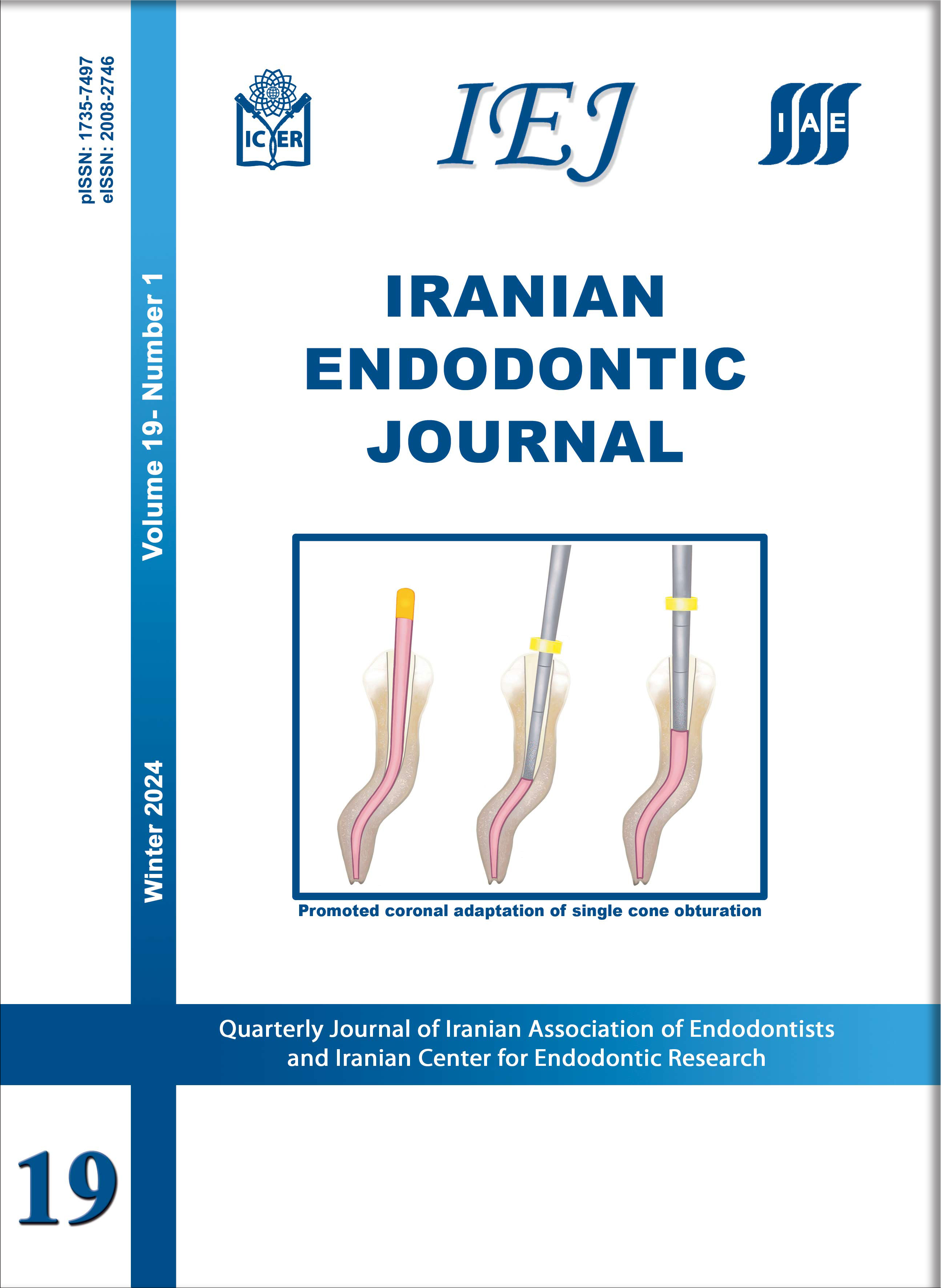Antibacterial Efficacy of Calcium Hydroxide and Chlorhexidine Mixture for Treatment of Teeth with Primary Endodontic Lesions: A Randomized Clinical Trial
Iranian Endodontic Journal,
Vol. 11 No. 4 (2016),
28 September 2016,
Page 255-260
https://doi.org/10.22037/iej.v11i4.10645
Introduction: This study compared the root canal microbial count of necrotic teeth after irrigation with 6% sodium hypochlorite (NaOCl) (single session treatment) and two-session root canal treatment with two-week application of calcium hydroxide (CH) mixed with 0.2% chlorhexidine (CHX) as intracanal medicament. Methods and Materials: In this randomized clinical trial, single-rooted necrotic teeth were divided into two groups. Root canal was irrigated with 2 mL of 6% NaOCl in one group, and a mixture of 0.2% CHX and CH powder as an intracanal medicament for two weeks, in the other group. Root canal samples were obtained before and after the intervention and number of colony forming units (CFUs) was counted in each phase. Results: The reduction of Enterococcus faecalis CFU was not significantly different between the two groups (P=0.233) but the CFU of aerobic and anaerobic bacteria was significantly lower in CH+CHX group (P<0.001). Conclusion: Two-week application of CH+CHX caused significant reduced the aerobic, anaerobic and E. faecalis colony counts. Thus, it may be beneficial to carry out primary root canal treatment of necrotic teeth with endodontic lesions in two sessions with intracanal medicaments to achieve predictable results.
Keywords: Calcium Hydroxide; Chlorhexidine; Endodontic Treatment; Periapical Abscess; Root Canal Therapy




